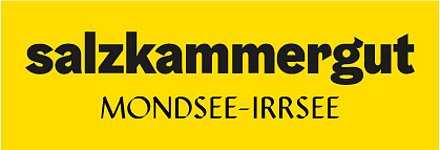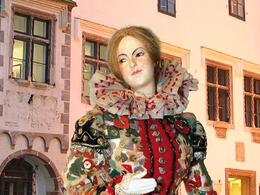Ausseer Regional Museum
8990 Bad Aussee

Description: Magnificent fossils tell of the history of the rocks and mountains of Ausseerland, which even Neanderthals once roamed in search of the cave bear. The great treasure of Ausseerland, salt, determined the fortunes of the region for eight centuries and allowed customs, folk music and a special type of building to flourish. Archduke Johann and the aristocratic summer visitors contributed to the preservation of this living heritage through their appreciation of traditional costume and the rich folk culture. The Aussee Museum in the Kammerhof, a medieval building jewel in the center of Bad Aussee, is dedicated to all of this and is known for its diversity and charm. Special exhibition 2025: “1945 - the end of the war in Ausseerland” Guided tours for children are also available by prior arrangement.
Description:
Guided tours for children are also available by appointment.
July and August: Guided tours every Thursday, 6 p.m.
History and folk culture of Ausseerland
The Kammerhof dates from the late 14th century and is one of the most important secular buildings in Upper Styria.
Today, the former salt office building houses valuable historical collections. The most beautiful exhibits are presented on 600 square metres of exhibition space:
ARCHAEOLOGY
For a good decade and a half, the Salzkammergut Archaeological Working Group has been unearthing finds from the Copper Age, Urnfield Period, Hallstatt and Latène Periods to the Roman Imperial Period. The most recent excavations along the mule track that led from Hallstatt through the Koppen to the south yielded sensational results.
SALT & LOCAL HISTORY
The development of Bad Aussee is closely linked to the salt industry right up to the present day. From the Middle Ages until the late 20th century, the "white gold" formed the economic basis of the town and was also responsible for Aussee's rise as a health resort. In 1911, the spa town of Aussee was awarded the title of "Bad".
ARCHDUKE JOHANN & ANNA PLOCHL
The exhibition is not only devoted to the well-known love story between the Habsburg Archduke Johann and the bourgeois Ausseerin Anna Plochl, but also shows Johann as a revolutionary and humanist. The emperor's brother carried out lasting reforms in Styria in particular. The exhibition conveys a deep impression of the work of this great visionary, of his love for the common people and for nature.
KAISERSAAL
The "splendidly furnished" Emperor's Hall housed "High Baronial Graces" - Frederick III, Maximilian I and Archduke Johann were guests here. The historically significant murals, painted around the middle of the 18th century, depict the sovereign production sites of the salt industry.
AUSSEERLAND - FROM SPA REGION TO TOURIST DESTINATION AND MUSEUM CINEMA
This exhibition describes the development of tourism in the Ausseerland region from the spa industry of the mid-19th century, to the summer resort region of the aristocracy and bourgeoisie, through the period of tourism between the wars and the immediate post-war period, to today's cultural and health tourism. The exhibition has been designed with great taste. It is rich in pictures and graphics and equipped with original exhibits.
Attached to the exhibition is the new museum cinema, which gives visitors an insight into the life of people in Ausseerland before the war (excerpts from films by Hans Gielge, contributions from the Austrian film archive....), into the world of traditional costume, handicrafts, etc.
AUSSEER TRACHTEN CRAFTS
No region in Austria is identified with its "Gwand" as much as Ausseerland. In three rooms, the visitor is shown the origins of what is probably the most dressy traditional costume in the Alpine region. This museum area was designed by Ausseer traditional costume craftsmen on the occasion of the 2005 provincial exhibition. Its centrepiece is the exhibition of magnificent old hand-printed models acquired by the Museum Society in 2003.
VOLKSMUSIK
The exhibition, which was completed in spring 2008, is dedicated to the well-known and popular folk music of Aussee, its history and its various forms of expression. Most of the exhibits - sheet music, pictures and instruments - come from the Kammerhofmuseum's rich collection. Many musical examples can be heard and the visitor is introduced to the world of Styrians, country dances, songs and yodelling by means of audio-visual installations. An interactive game called "Virtual Pasch" enables visitors to learn how to pasch an Aussee Styrian in an entertaining way. This game is the absolute highlight of the museum.
BROUGHT
25 life-size figures are on display to give visitors an understanding of Aussee's customs throughout the year. The carnival is given ample attention! The old inn of the Bachwirt in Lupitsch was purchased especially for this exhibition.
TRACHT
A lovingly designed diorama shows the development of the Aussee traditional costume from the original costume to the "Gwand" of the present day. Lovingly designed dioramas show the traditional costume of Archduke Johann's time. The fact that the Ausseer Tracht is still nothing like a museum today is probably due to the fact that it has been carefully and continuously adapted to contemporary tastes since the middle of the 19th century.
FOSSILS
Fossils are the remains of living creatures from past times - usually preserved as imprints, stone cores or shell remains. The mountains around Ausseerland are mainly composed of carbonate marine deposits of the Mesozoic period. Its rocks are rich in fossils, which are unparalleled anywhere in the world and gain even more beauty through preparation.
CAVE LORE (CAVE BEAR)
The cave collection, together with the traditional costume chamber, formed the initial furnishings of the Ausseer Kammerhofmuseum. In 2005, the "Höhlenkunde" was completely redesigned and equipped with a cave in which wolverine and cave bear await the visitor. The centrepiece of this exhibition is the hunting station of an Ice Age bear hunter, the Salzofenhöhle in the Tote Gebirge. Remains of a rich Ice Age fauna have been recovered from it.
ANNUAL SPECIAL EXHIBITIONS!
Included Service:
Current special exhibition "The end of the war in Ausseerland 1945"
In the spring of 1945, the imminent defeat of the National Socialist Reich by the approaching Allied armies was obvious. For various reasons, many people made their way to Ausseerland, the heart of the supposed “Alpine fortress”, which had been spared from bombing. Some of the National Socialist elite also found their way here. The organizer of the extermination of the Jews, Adolf Eichmann, retreated to Altaussee with part of his Einsatzkommando, where the head of the Reich Security Main Office, Ernst Kaltenbrunner, also arrived and gave his final orders. While several Eastern European governments in exile were also quartered in Altaussee, the Joseph Goebbels family repeatedly stayed in Gößl, not far from Lake Toplitz. This is also where the biggest counterfeiting operation of all time came to an end. The exhibition traces this mysterious chapter from the final phase of the Third Reich. It also tells of the last remnants of SS troops in the mountains, the first year of the American occupation in overpopulated Ausseerland, the post-war actions of the “Ausseerland Freedom Movement” and much more. Translated with DeepL.com (free version)
8990 Bad Aussee
Phone +43 6768 3622520
E-Mail info@kammerhofmuseum.at
Web www.kammerhofmuseum.at/
Contact person
Mrs Sieglinde Köberl
Ausseer Kammerhofmuseum
Chlumeckyplatz 1
8990 Bad Aussee
Phone +43 6768 3622520
E-Mail info@kammerhofmuseum.at
Web www.kammerhofmuseum.at/
Legal contact information
Stadtgemeinde Bad AusseeBürgermeister
Hauptstraße 48
AT-8990 Bad Aussee
gemeinde@badaussee.at
http://www.badaussee.at
Kammerhof Museum with all exhibitions open from 10 am - 3 pm (except Monday)
- Monday
- Guided tour
Admission prices
- Adults € 8,00
- Children and youths (up to 18 years) € 3,00
- Family € 12,00
- Students and senior citizens € 7,00
Salzkammergut Card accepted.
With the Styria Card or Sommerclou Card
- Admission included
- Salzkammergut Sommer-Card
Normal price / special price
Adults EUR 8.00 / EUR 6.50
Seniors EUR 7,00
Children EUR 3.00
- All weather
Somewhat suitable for wheelchairs: Assistance is sometimes necessary. The measurements do not (fully) conform to the legally stipulated ÖNORM.





